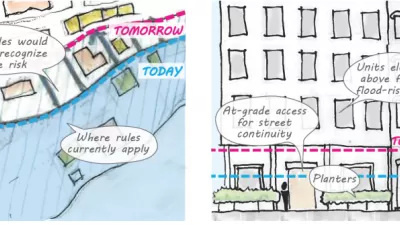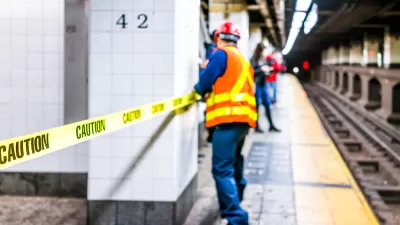As we've heard recently, many of the places most vulnerable to rising sea levels and extreme weather are in developing countries. Encouragingly, however, Sandy revealed several low-cost solutions to help mitigate the impacts of severe storms.
For countries unable to consider multi-billion dollar infrastructure projects to protect their coastal communities, Judith Rodin says there is hope in some of the low-cost solutions that proved effective in reducing the damage from Sandy. For her, "what stands out from New York City's
preparedness are not the expensive investments in hard infrastructure
like sea walls, but rather a collection of softer measures focused on
effective institutional coordination, rapid and accurate information
sharing and timely decision making."
Examples include the closing down of bridges and tunnels before they were flooded and preparation of the subway and electrical systems for rebooting after the storm passed.
"As debris is cleared from New York's subway tunnels, millions regain
power and the billions of dollars in damages are quantified," says Rodin, "let us
ensure that the lessons of Sandy's pounding are recalled across the
developing world, where rapidly growing cities are even more vulnerable
and where the need for action is urgent."
FULL STORY: Learning From the Superstorm

Maui's Vacation Rental Debate Turns Ugly
Verbal attacks, misinformation campaigns and fistfights plague a high-stakes debate to convert thousands of vacation rentals into long-term housing.

Planetizen Federal Action Tracker
A weekly monitor of how Trump’s orders and actions are impacting planners and planning in America.

Chicago’s Ghost Rails
Just beneath the surface of the modern city lie the remnants of its expansive early 20th-century streetcar system.

Bend, Oregon Zoning Reforms Prioritize Small-Scale Housing
The city altered its zoning code to allow multi-family housing and eliminated parking mandates citywide.

Amtrak Cutting Jobs, Funding to High-Speed Rail
The agency plans to cut 10 percent of its workforce and has confirmed it will not fund new high-speed rail projects.

LA Denies Basic Services to Unhoused Residents
The city has repeatedly failed to respond to requests for trash pickup at encampment sites, and eliminated a program that provided mobile showers and toilets.
Urban Design for Planners 1: Software Tools
This six-course series explores essential urban design concepts using open source software and equips planners with the tools they need to participate fully in the urban design process.
Planning for Universal Design
Learn the tools for implementing Universal Design in planning regulations.
planning NEXT
Appalachian Highlands Housing Partners
Mpact (founded as Rail~Volution)
City of Camden Redevelopment Agency
City of Astoria
City of Portland
City of Laramie





























